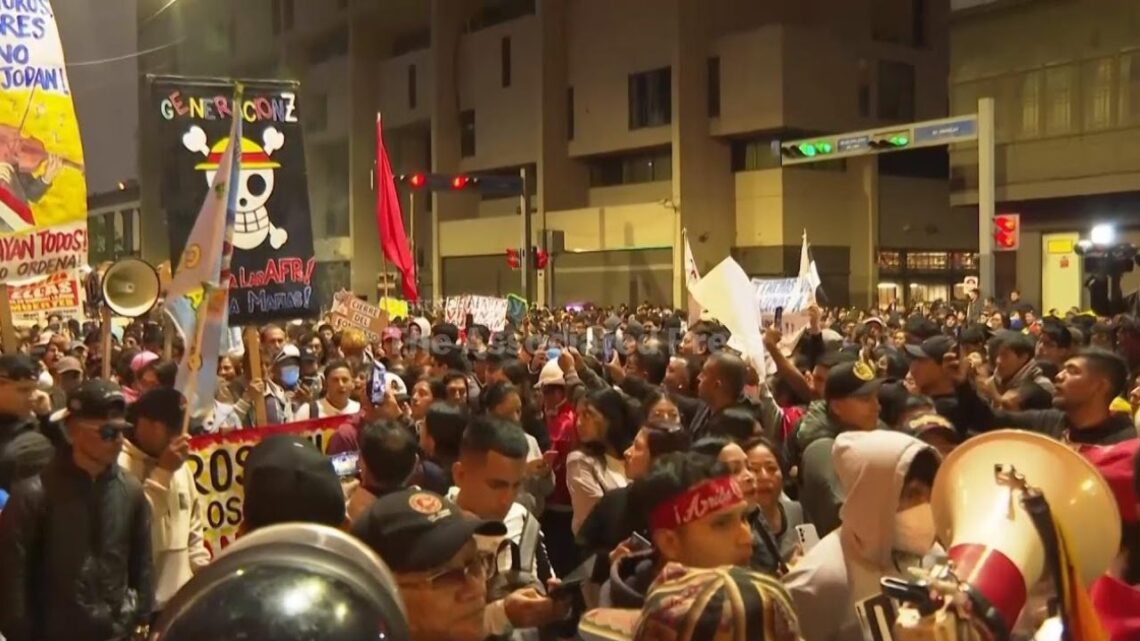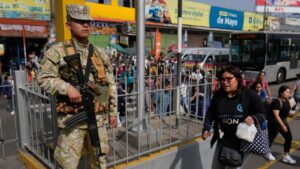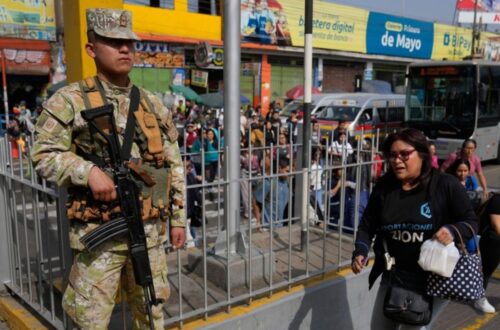Generation Z activists from across Peru have taken to the streets to demand legislative reforms that tackle the twin crises of corruption and rising crime.
After the government declared a 30-day state of emergency in Lima and Callao—deploying the military to support police and limiting freedom of movement—the protests intensified when at least one person was killed and more than a hundred injured during demonstrations.
The youth view this as a tipping point: short-term crack-downs no longer suffice. They want sweeping legal changes.
The Security Backdrop: Alarming Trends
The backdrop to the protests includes alarming crime statistics: homicides in Peru have tripled over a seven-year period. Extortion complaints have exploded from just over two thousand in 2020 to more than twenty-one thousand in 2024.
These numbers have shaken public faith in existing emergency powers and policing strategies. Young Peruvians see this as their future being stolen—not just by criminals, but by a system that fails to protect them or offer real opportunity.
What Gen Z Is Demanding
The marchers are presenting a clear reform agenda. It centers on:
- Establishing an independent anti-corruption authority free from political interference.
- Introducing tougher legislation against organized crime and extortion rings.
- Reforming police and prison systems to reduce corruption, improve oversight, and prevent gangs from operating inside prisons.
- Ensuring that emergency powers come with real oversight and clear time limits, rather than becoming permanent measures.
- Investing in youth employment and education to reduce the appeal of gang recruitment and offer viable alternatives.
Government’s Immediate Response
The government has rolled out its emergency decree, which includes military patrols on city streets, restrictions on large gatherings, bans on certain two-up motorcycle rides (popular with extortion groups), and tougher prison controls.
While these moves aim to restore immediate order, protesters and youth groups insist that only legislation—not decrees—will deliver long-term change. They plan to keep demonstrating peacefully until their demands are heard in Congress.
Fast Facts & Key Dates
| Issue / Event | Latest Data or Action | Date | What Gen Z Is Asking For |
|---|---|---|---|
| State of Emergency in Lima & Callao | 30-day decree with military support | Oct 22 | Transform emergency response into lasting laws |
| Protest casualties | 1 dead, 100+ injured in mid-October rallies | Oct 15–16 | Accountability for violence, protection of rights |
| Crime surge | Homicides tripled, extortion >21,000 complaints in 2024 | 2018–2024 trend | Strong anti-extortion laws, better enforcement |
| Public scepticism | Emergency measures seen as insufficient | Ongoing | Data-driven policing, transparency |
| Youth reform agenda | Anti-corruption, jobs, education key | Ongoing | Independent prosecutors, youth pathways |
What Effective Reform Could Look Like
To meet the demands of Peru’s youth movement, reform might involve:
- Tightening anti‐extortion laws – harsher penalties for organized rackets, streamlined digital evidence procedures, protection programs for witnesses.
- Empowering anti‐corruption institutions – removing political layers, requiring open contracting and public access to spending.
- Modernising police and prison systems – intelligence-led policing against gangs, signal jammers in prisons, internal audits to root out corruption.
- Ensuring emergency‐power oversight – requiring Congress to review every 15 days, publishing key metrics such as homicide rate, extortion calls, arrests, convictions.
- Providing youth economic opportunity – tax credits for businesses hiring young people, micro-grants for youth enterprises, expanded vocational training to reduce gang recruitment.
The movement led by Peru’s Generation Z has made clear: deploying soldiers and police is not enough. Their demands go beyond immediate force, calling instead for structural, legislative change.
The emergency decree may serve as a short-term fix, but only laws backed by strong institutions, transparent oversight, and meaningful youth investment will build sustained security and trust.
Now the spotlight is on Congress to translate protest energy into lasting reform.









